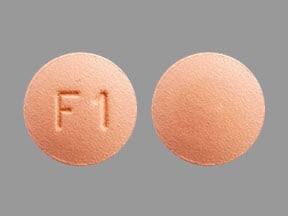My prescription
Edit
1MG, Finasteride (30 Tablets)
Select pharmacy

CVS
$18.87
COUPON PRICE
Walmart
$3.93
COUPON PRICE
Walgreens
$10.40
COUPON PRICE
Albertsons
$16.01
COUPON PRICEFree Finasteride Savings Card

Walmart
$3.93
Show this coupon to your pharmacist
ID
LH2F09D859
PCN
CHIPPO
BIN
019876
GRP
LHX
This coupon is not insurance
Price history for Propecia (brand) & Finasteride (generic)
30 Tablets, 1MG
Average retail price for Propecia
Average retail price for Finasteride
Average SaveHealth price for Finasteride
Our price history data is based on aggregated prescription data collected from participating pharmacies in America. Our prescription data updates daily to reflect the latest price changes. If you notice a missing data point, it means there wasn't sufficient data available to generate a monetary value for that date.
We analyzed Finasteride prices for (1MG, 30 Tablets) over the last 12 months. The average retail price was $74.40, while the average price using the SaveHealth discount card was $32.65. That's a savings of approximately 56.12% when using our Finasteride coupon.
Compared to the generic version, Propecia had an average price of $131.27 over the same time period. With the SaveHealth savings card, Finasteride is 75.13% cheaper on average than Propecia.
*Retail prices are based on pharmacy claims data, and may not be accurate when we don't have enough claims.
Finasteride dosage forms
Dosage Quantity Price from Per unit 1MG 30 Tablets $3.93 $0.13 1MG 60 Tablets $5.37 $0.09 1MG 90 Tablets $13.30 $0.15 1MG 100 Tablets $13.78 $0.14 1MG 180 Tablets $23.22 $0.13 5MG 15 Tablets $3.62 $0.24 5MG 30 Tablets $4.74 $0.16 5MG 45 Tablets $5.86 $0.13 5MG 60 Tablets $6.98 $0.12 5MG 90 Tablets $15.72 $0.17
| Dosage | Quantity | Price from | Per unit |
|---|---|---|---|
| 1MG | 30 Tablets | $3.93 | $0.13 |
| 1MG | 60 Tablets | $5.37 | $0.09 |
| 1MG | 90 Tablets | $13.30 | $0.15 |
| 1MG | 100 Tablets | $13.78 | $0.14 |
| 1MG | 180 Tablets | $23.22 | $0.13 |
| 5MG | 15 Tablets | $3.62 | $0.24 |
| 5MG | 30 Tablets | $4.74 | $0.16 |
| 5MG | 45 Tablets | $5.86 | $0.13 |
| 5MG | 60 Tablets | $6.98 | $0.12 |
| 5MG | 90 Tablets | $15.72 | $0.17 |
Finasteride Warnings
This medication comes with important safety information and warnings that you should carefully consider. If you have any concerns, it is crucial to discuss them with your healthcare provider.
Risk to Pregnant Individuals: Women who are pregnant or may become pregnant should avoid handling finasteride (Propecia) tablets, especially if they are broken or crushed. Contact with the medication can lead to skin absorption and may result in serious birth defects.
Impact on PSA Levels: Finasteride (Propecia) may reduce prostate-specific antigen (PSA) levels, potentially affecting prostate cancer test results. It is important to have your PSA levels monitored by your healthcare provider before and during your treatment. If PSA levels increase during the course of treatment, it may indicate prostate cancer, necessitating further medical evaluation.
Contraindications: Certain individuals should not use this medication due to potential health risks. It is crucial to consult your healthcare provider if any of these conditions apply to you:
- Those who are pregnant or might become pregnant.
- Individuals with an allergy to any form of finasteride, including Proscar.
By adhering to these guidelines and consulting with your healthcare provider, you can ensure the safe use of this medication.
Finasteride Side Effects
Common side effects:
- Reduction in sexual desire
- Less semen release during sexual activity
Serious side effects:
- Changes in breast tissue (lumps, nipple discharge, enlargement)
- Testicular pain
- Difficulty urinating
- Allergic reactions (rash, itching, swelling, severe dizziness, trouble breathing)
Finasteride Interactions
Interactions with moderate risk that may require dose adjustment, closer monitoring, or timing changes:
- St John's Wort

